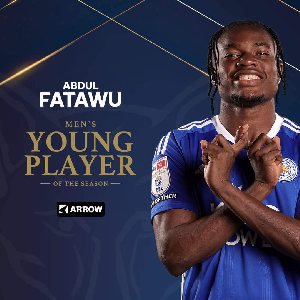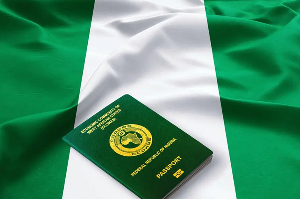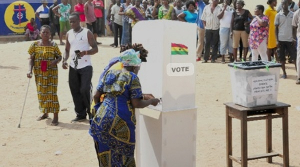General News of Thursday, 11 December 2003
Source: gri
Media Coverage of NRC proceedings continue to decline
Media coverage of the National Reconciliation Commission (NRC) continues to decline, a study carried out by Media Watch has revealed. The study, which covered October 2003, noted that the sittings in camera during the last week of that month affected the coverage.
Moses Foh Amoaning, Cooperate Group Director of Media Watch, presented the report.
National Media Commission (NMC) has contracted Media Watch to monitor media coverage of the NRC.
Amoaning said the coverage was analysed in terms of prominence, space or airtime as well as tone of the national reconciliation process.
He commended the Ghana News Agency for publishing a total of 22 stories all of which were neutral in tone and in their portrayal of witnesses.
The Evening News assigned the largest amount of space 19.6 per cent to NRC as compared to other newspapers coded and the Ghanaian Times placed second with 15.9 per cent, the Daily Guide had 14.1 per cent, Daily Graphic 11.5 per cent, Accra Daily Mail 11.1 per cent, Chronicle 6.9 per cent, Network Herald 4.7 per cent, Independent 4.4 per cent, Pioneer 3.6 per cent, Statesman 2.7 per cent, Crusading Guide 2.5 per cent, Daily Dispatch 2.1 per cent, Ghana Palaver 1.1 per cent, National Concord 0 per cent.
The GTV, assigned the largest amount of television airtime of 97.4 per cent to NRC sittings whilst TV3 and Metro TV each had 1.3 per cent airtime.
Amoaning said witnesses and actors also were neutrally portrayed in television broadcast.
Stories carried on the radio were 100 per cent neutral in tone with no favourable or unfavourable stories.
He said Joy FM devoted 19.5 per cent of the total airtime used to cover NRC. Unique FM followed with 18.7 per cent. The coverage by Radio Gold, Peace FM, Sky FM, Joy FM during the period under review was mainly in the form of news paper reviews, discussion programmes and interviews.
Amoaning said 89.9 per cent of the print media coverage was neutral with favourable stories being 8.9 per cent while unfavourable stories were constituted 1.3 per cent.
He said 97.5 per cent of the witnesses or actors were neutrally portrayed, with the remaining being favourable or unfavourable.
Amonaing said most stories on TV were enhanced with actuality that favoured the less prominent actors with 37.7 per cent out of 100 per cent total photo enhancement.
He said 73.4 per cent of radio stories had no actuality and only 26.6 per cent having enhancements.
He said out of a total of 44 enhancements the Evening News had the largest amount of 40.9 per cent with three pictures per story followed by Crusading Guide, which had 13.6 per cent.
He said the picture of Ex-President, Flt Lt J.J. Rawlings was the most used to enhance the NRC stories scoring 9.09 per cent followed by Mr Justice Amua Sekyi, the Chairman of the NRC, with 6.8 per cent.
Amoning said of the 79 stories that were coded 66 were straight news, five were features; and editorials and letters had three each.
He said programmes monitored from Super Morning Show, Kokrokoo, Gold Newspaper Review, Sky Morning Show, showed that Mr Ken Attafuah, Executive Secretary of NRC, was interview on a number of occasions.
He said prominence must be given to stories on national reconciliation and media attention must be given to all witnesses, who appear before the NRC.
He said unlike the previous reports, this one employed validity concepts and tests. Validity analysis allowed the study to obtain information for the appropriate inferences and interpretations of the research findings.
He said considering the nature of the study, face validity measure, which is the most commonly used for analysis that aims at inferences such as the current study was selected from other types of tests.
He said an efficient coder reliability level was achieved through clarity and simplification of category and concept definitions, adding that an expected coder agreement of 85 per cent was found to be desirable for the study.
Kingsford Amoah, a Member of NMC, who chaired the meeting, called on media house to show interest in the work of the NRC.
He suggested to writers of headlines of newspapers to exercise a great deal of circumspection and avoid sensationalism.
Ms Annie Anipa, Public Affairs Director of NRC, said the Spirit of Akosombo provided guidelines and if the media were to act as information providers, them they must engage in advocacy in human rights abuses.
She observed that the media in covering the NRC proceedings had not highlighted the numerous human rights abuses that had been complained about at the sittings.











